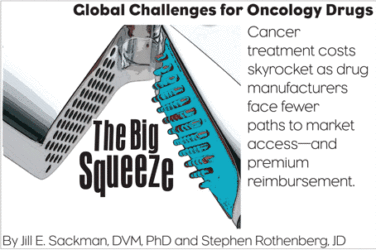Milan was devastated. As the disease spread, the death toll continued to rise. The hospital was filling to capacity. A general quarantine was ordered to keep people in their homes. That’s when it started: The singing. Voices rose from windows and balconies, blending with church bells to form an angelic choir. As one witness commented, “In walking around Milan, one heard nothing but song.”
We’ve all seen the videos. Impromptu choirs filling the streets with song offering a moment of respite and connection in the midst of physical distancing thrust onto us by COVID-19. Except the description above isn’t an account about life in Milan during our current pandemic. It’s about life in Milan in 1576, at the height of the plague.1
We’ve come a long way from 1576, when doctors were already prescribing music as part of a treatment regime, noting that “…it is especially advantageous to listen to songs and lovely instrumental music, and to play now and then, and to sing with a quiet voice….” Today, we have a wealth of empirical studies that speaks to the social, emotional, and physical benefits that come from listening to music and soundscapes. From stress reduction and anxiety relief to pain mitigation and faster recovery times, there is a growing recognition that these “sonic tonics” can not only improve patient outcomes, but functionally enhance patient experiences as well.2
Undervalued Assets
As marketers, we know the importance of providing seamless brand experiences. However, we often fail to consider the impact of sound on the consumer journey, and subsequently on both brand perception and consumer behavior. Here, too, hundreds of empirical studies demonstrate the power of sound to increase attention, facilitate brand/message recall, improve brand perception, drive purchase intent, produce chemical reactions, increase appeal, build positive associations, and prime implicit responses.3
In spite of this evidence, music and sound continue to be undervalued assets in the marketing toolbox. In a recent study, Ipsos reviewed a sample of more than 2,000 U.S. audio/visual advertisements, identifying not only the distinctive assets used, but their degree of impact on brand salience. The results? Visual assets accounted for 92% of the total, with sonic assets (e.g., audio logos, brand cues, and music) accounting for only 8%. Yet in spite of these overwhelming odds, audio assets outperformed visual assets 3:1 when capturing attention and delivering brand salience. In fact, sonic logos were 8.5x more likely to be a driver of high-performing ads than the visual assets in the commercials.4
A Sonic Rx
Even when brands and marketers recognize that sound is one of the most powerful implicit emotional drivers at their disposal, they often wrestle with how to turn their “sound belief” into actionable strategies. To harness the power of sound to amplify your brand, I offer the following prescription to improve your sonic health:
Change Your Sonic Perspective: All too often, music and sound are designed to serve limited campaign objectives. We need to move away from the preoccupation with creative execution (which perpetuates a high degree of subjectivity and inefficiency) and move towards understanding sound from a more brand-centric perspective. Our sonic choices should be intentional, based on a clearly defined strategy designed to align brand intent with consumer perception, and easily implemented throughout a brand’s entire audio ecosystem.
Define Your Sonic Profile: What does your brand sound like? Imagine your brand as a character or an archetype. Try to imagine pieces of music, soundscapes, voices, and other sounds that fit your brand personality, communicate your brand attributes, and define your brand experience.
Identify Distinctive Audio Assets: You may already have sonic assets at your disposal, but you’ve not identified them as such. Start by considering your distinctive visual assets. How do consumers recognize your brand visually? Is it a visual logo? A color? A design style? Now consider your distinctive sonic assets. How do consumers recognize your brand sonically? Is it a particular voice you use regularly? A particular piece or genre of music associated with the brand across multiple channels? Do you have a sonic logo? If these assets don’t exist, consider developing them.
Consider the Six Measurable Parameters of Sonic Identity: The music, voice, and sounds that you choose to associate with your brand should be congruent with brand attributes, flexible enough to adapt to various uses, recognizable in a variety of contexts, distinct enough to stand out from other brands, appealing to consumers, and ownable (copyrights and executions) by your brand.
Build Sonic Equity: Consider all the audio touchpoints available to you in the context of your consumer interactions: Broadcast and digital advertising, pharmacies and healthcare environments, smart speakers and connected homes, user interfaces and applications, functional sounds, on-hold messages, experiential activations, and more. Consistency, frequency, and reach are key to building recognition and sonic equity.
Go Long: More than just activating sales in the short term, look for ways that music, sound, and voice can create long-term emotional connections that speak to an experience of your brand. Make choices that are brand centric, not just campaign centric.
Develop Audio KPIs: Develop KPIs that allow you to address measurable outcomes in three specific areas: How do you want sound to impact consumer behavior? How do you want sound to impact brand perception? How do you want sound to contribute to building brand equity? This simple exercise will not only inform your sound choices, but the intention with which you make them.
Sound Decisions
The key to sound marketing is the ability to make sound decisions. A winning sonic strategy doesn’t start with your ears, but what’s between them. What role does sound play in your brand communication, identity, experience, and innovation? Can you claim a unique sonic space? How do you want listeners to feel, think, or do? Exploring these questions can help put you on the road to sonic recovery where you need it.
Here’s to your sound health!
Resources:
1. Chiu, R. (2020). “Music Under Quarantine: Two Views from Milan, 1576 and 2020.” UnderScore, https://www.areditions.com/news/music-under-quarantine.
2. Spence, C. and Keller, S. (2019). “Medicine’s Melodies: On the Costs & Benefits of Music, Soundscapes, & Noise in Healthcare Settings.” Music and Medicine, 11(4), 211-225.
3. Allan, D. (2007). “Sound Advertising: A Review of the Experimental Evidence on the Effects of Music in Commercials on Attention, Memory, Attitudes, and Purchase Intention.” Journal of Media Psychology, 12(3), 1-35; Müllensiefen, D., and Baker, D. J. (2015). “Music, Brands, & Advertising: Testing What Works.” In K. Bronner, C. Ringe, & R. Hirt (Eds.), Audio Branding Academy Yearbook 2014/2015, 31–51. Baden-Baden: Nomos; North, A., and Hargreaves, D. (2008). The Social and Applied Psychology of Music. New York, NY: Oxford University Press; Oakes, S. (2017) “Evaluating Empirical Research into Music in Advertising: A Congruity Perspective.” Journal of Advertising Research, 47 (1) 38-50; Vijaykumar, K., Kellaris, J.J., and Aurand, T.W. (2012) “Sonic Logos: Can Sound Influence Willingness to Pay?” Journal of Product and Brand Management, 21(4), 275–284.
4. Sheridan, A. (2020) “The Power of You: Why Distinctive Brand Assets Are a Driving Force of Creative Effectiveness.” Ipsos Game Changers, https://www.ipsos.com/sites/default/files/ct/publication/documents/2020-02/ipsos_views_power_of_you_0.pdf.









